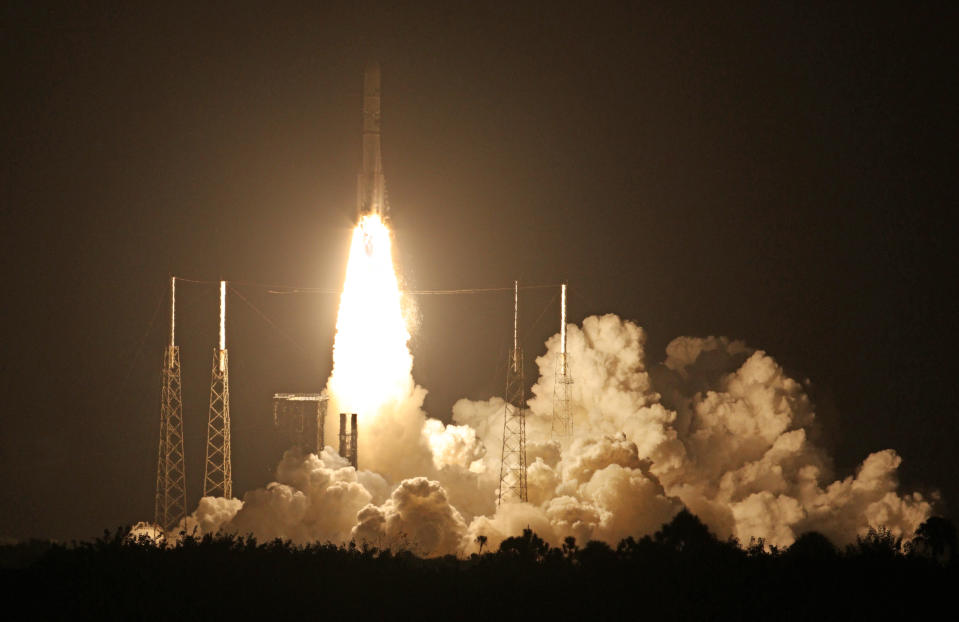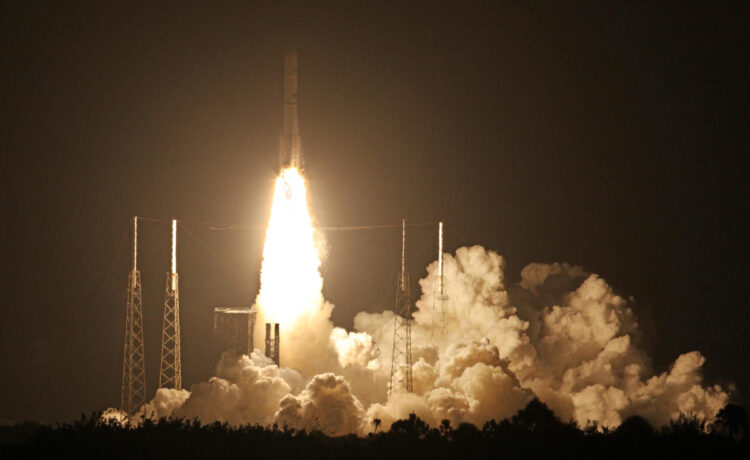The first US attempt to return to the moon hit a major snag on Monday after Pittsburgh-based Astrobotic’s lunar lander suffered a problem with its propulsion system hours after liftoff.
In a statement, the company said the system failure was “causing a critical loss of propellant” and forcing the firm to assess “what alternative mission profiles may be feasible at this time.”
Astrobotic is attempting a return to the moon more than 50 years after the Apollo mission, with one big distinction — becoming the first commercial space company to land an aircraft on the moon’s surface.
“It took a while for technology to advance to the point where we could affordably, routinely, regularly get to the surface of the moon,” Astrobotic CEO John Thornton said in an interview with Yahoo Finance ahead of the launch. “The stars have aligned for the moon, if you will.”
Thornton and his team placed their first bet on the Peregrine lunar lander, a small-class spacecraft developed inside its 47,000-square-foot facility. Equipped with electronics, propulsion, and communications systems, the Peregrine was loaded aboard United Launch Alliance’s (ULA) Vulcan Centaur rocket and launched at 2:18 a.m. ET Monday morning in Cape Canaveral, Fla.


The launch was successful, but seven hours after liftoff, the company said it encountered a propulsion system issue that prevented the spacecraft from pointing toward the sun, a function that’s critical for generating solar energy to power the lunar lander.
On Monday afternoon, Astrobotic shared the first image captured by the Peregrine in space, saying it was able to reestablish communication with the spacecraft and fully charge the battery. However, the company implied that the loss of propellant has made a moon landing unlikely.
Astrobotic added it would use the Peregrine’s existing power to “perform as many payload and spacecraft operations as possible.”
(1/4) We’ve received the first image from Peregrine in space! The camera utilized is mounted atop a payload deck and shows Multi-Layer Insulation (MLI) in the foreground. pic.twitter.com/dUuu0Idz8K
— Astrobotic (@astrobotic) January 8, 2024
A successful landing by the Peregrine would mark a major milestone in the private space race that has spawned a $470 billion industry globally and would elevate a more audacious goal: human life on the moon.
“To crack the nut of the moon, we need the infrastructure and resources to begin to start to work,” Thornton said. “The more we can remove our tether of reliance on earth’s resources and we travel into space, the more we become true space explorers and ultimately space settlers.”
While early Apollo missions were driven by government agencies like NASA, the rapid growth in private space companies has led to a surge in new missions stemming from private-public partnerships focused on scientific research and space exploration. Elon Musk’s Space X alone has operated eight manned space flights to the International Space Station in partnership with NASA.
Yet, commercial success on the moon has remained elusive. An attempt by Japan’s ispace to land the first commercial lander on the lunar surface fell short earlier this year when its Hakuto-R lunar lander miscalculated the altitude and crashed.
The Peregrine lander was expected to touch down on the moon on Feb. 23.
Click here for the latest technology news that will impact the stock market.
Read the latest financial and business news from Yahoo Finance
















